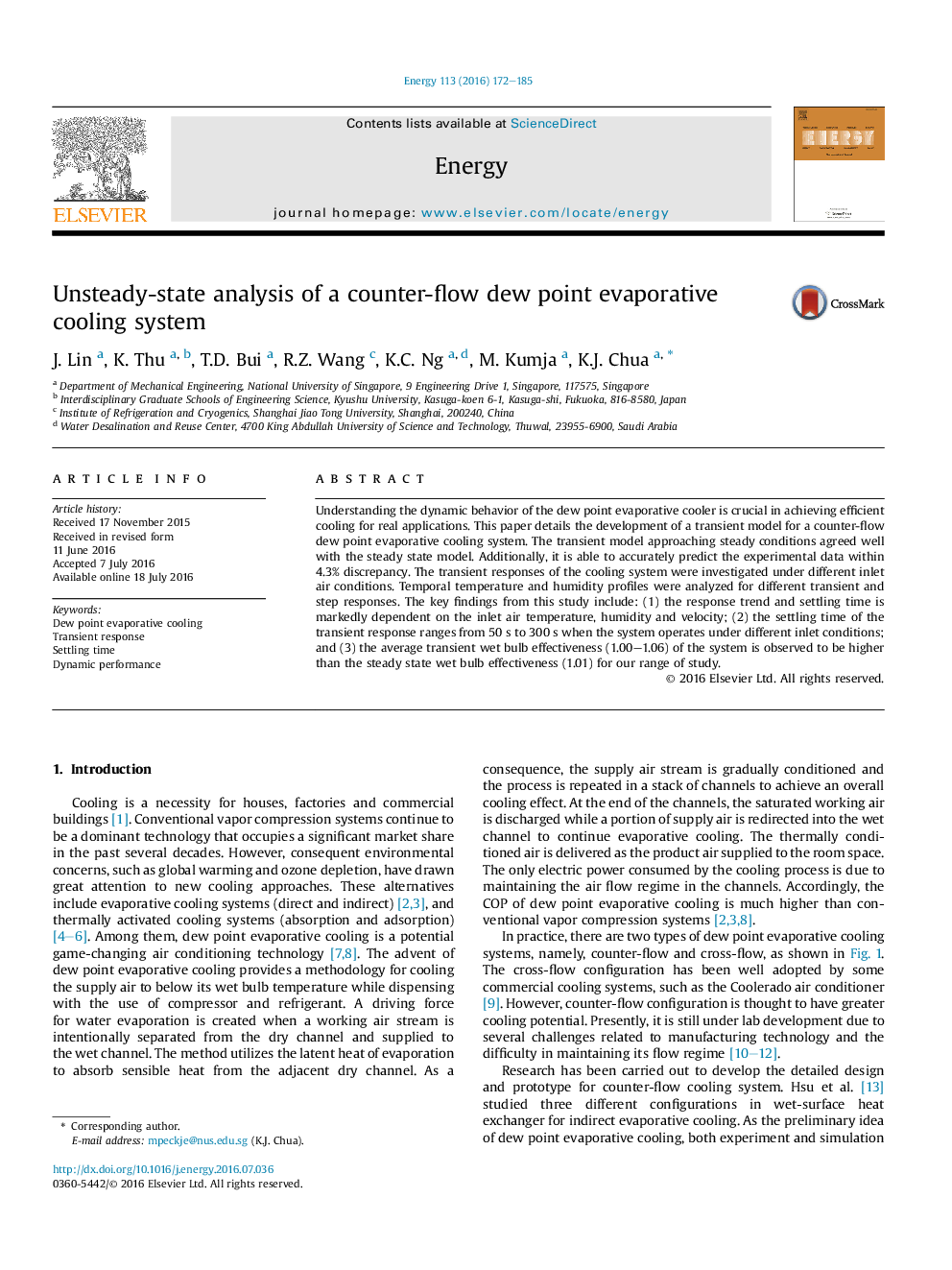| Article ID | Journal | Published Year | Pages | File Type |
|---|---|---|---|---|
| 1730731 | Energy | 2016 | 14 Pages |
Abstract
Understanding the dynamic behavior of the dew point evaporative cooler is crucial in achieving efficient cooling for real applications. This paper details the development of a transient model for a counter-flow dew point evaporative cooling system. The transient model approaching steady conditions agreed well with the steady state model. Additionally, it is able to accurately predict the experimental data within 4.3% discrepancy. The transient responses of the cooling system were investigated under different inlet air conditions. Temporal temperature and humidity profiles were analyzed for different transient and step responses. The key findings from this study include: (1) the response trend and settling time is markedly dependent on the inlet air temperature, humidity and velocity; (2) the settling time of the transient response ranges from 50Â s to 300Â s when the system operates under different inlet conditions; and (3) the average transient wet bulb effectiveness (1.00-1.06) of the system is observed to be higher than the steady state wet bulb effectiveness (1.01) for our range of study.
Related Topics
Physical Sciences and Engineering
Energy
Energy (General)
Authors
J. Lin, K. Thu, T.D. Bui, R.Z. Wang, K.C. Ng, M. Kumja, K.J. Chua,
